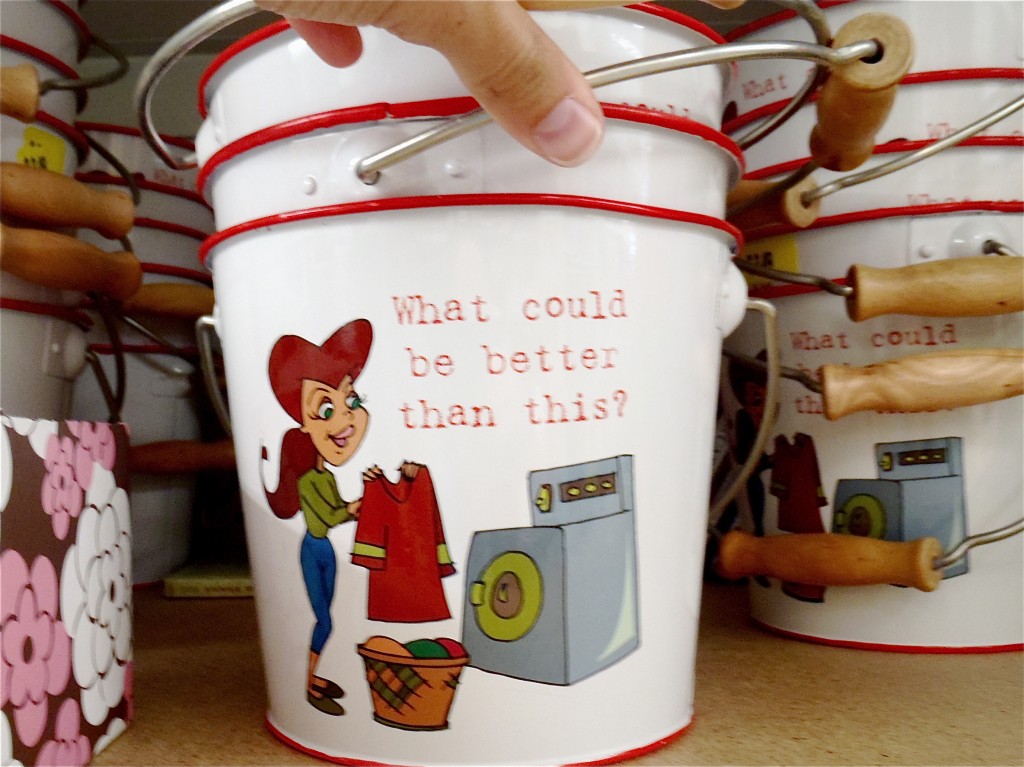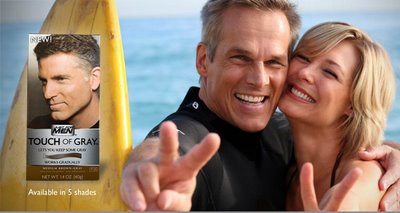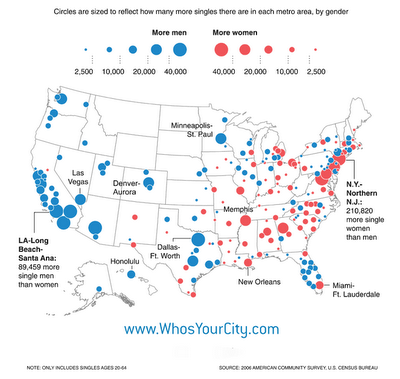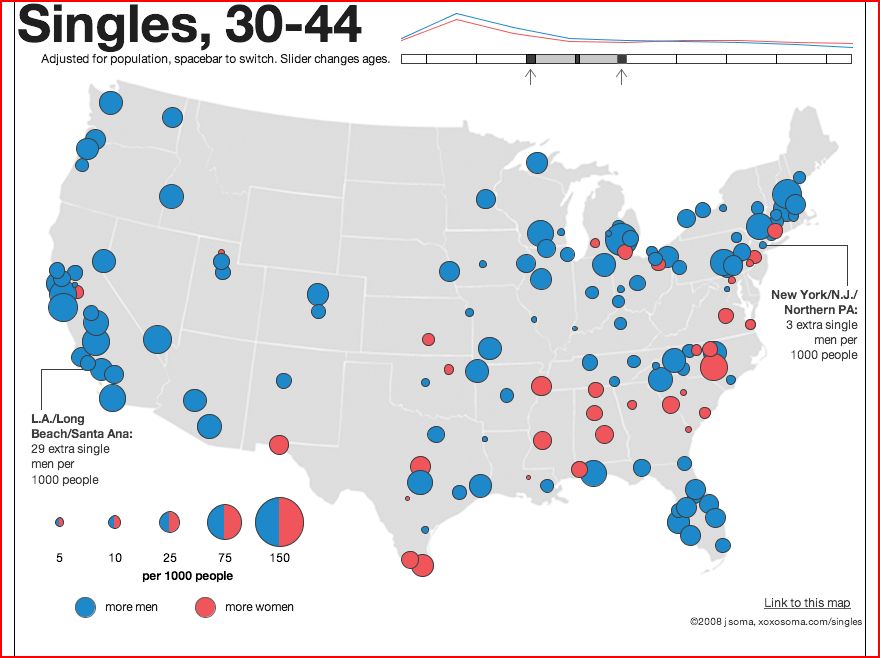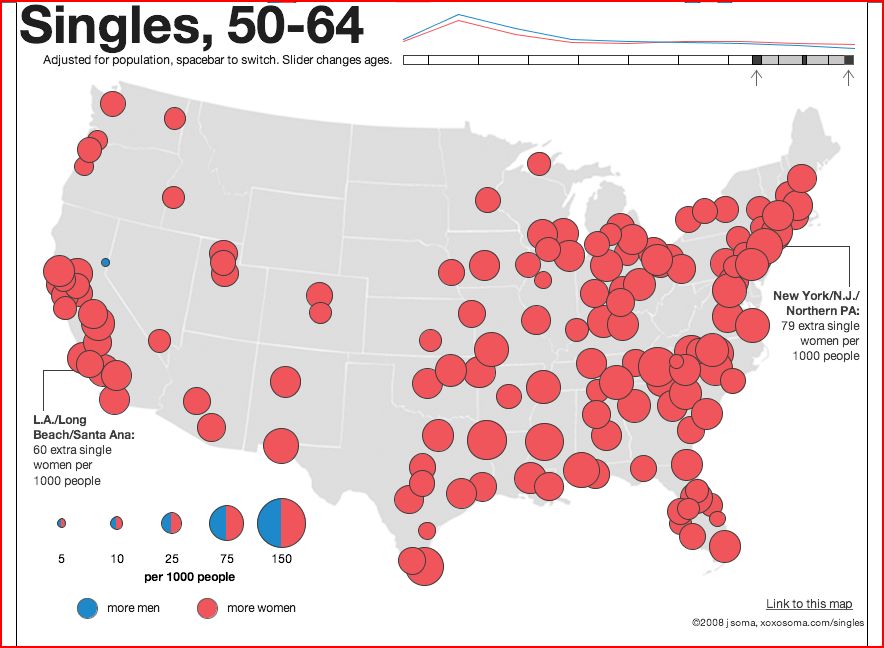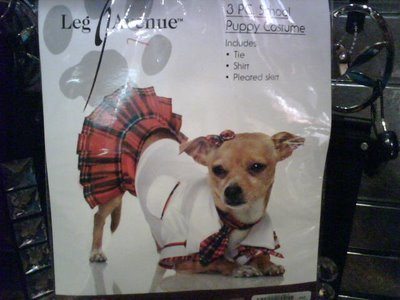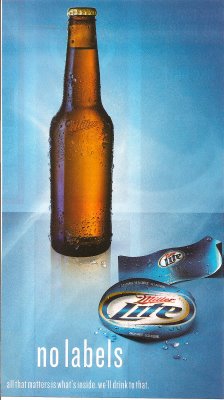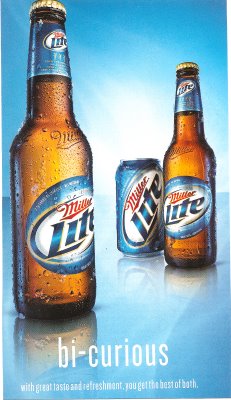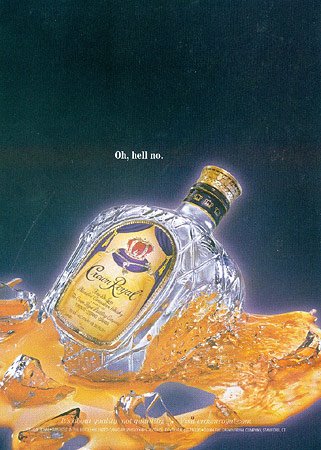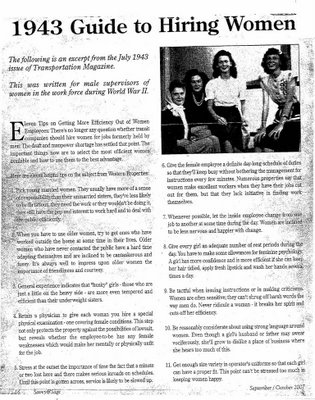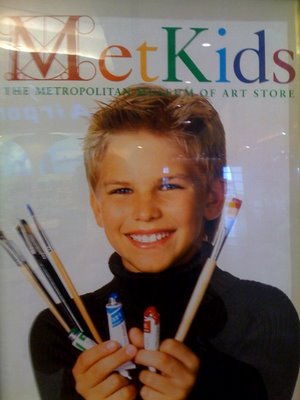The Home Made Simple Squad is a new ad campaign for Proctor & Gamble cleaning products. Five women make up the Squad. From Lori’s bio:
‘I love to entertain in my home, and when people come over, I want them to walk in and immediately feel welcome and comfortable. So I make sure my house is always looking good and smelling fresh.’ Lori, 37, prides herself on her clean and well-organized home that’s always ‘company-ready’. Lori is disciplined about more than just caring for her home – she’s also recently lost 95 lbs, and keeps fit with a regimen of healthy eating, power walking and yoga.
So not only is she a good housekeeper, she keeps herself fit and trim, too!
Although all of the bios mention that the women have children and are busy, not a single one mentions a husband, partner, or other adult who might have some role in keeping a house clean. Or, for that matter, making the kids clean up after themselves.
Thanks to an anonymous commenter on another post for bringing my attention to this one!
NEW! This vintage ad relates sweeping the floor to dancing… because cleaning vinyl-plastic tile flooring, unlike cleaning other kinds of floors, is a kick!
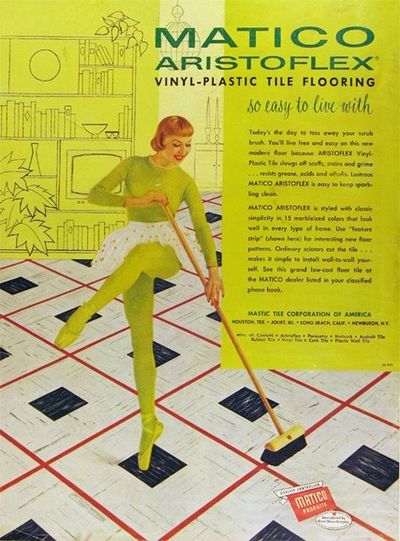
An Anonymous Reader sent another example of the message that women absolutely love cleaning! The bucket reads, “What could be better than this?” I suppose it could be tongue-in-cheek, but I’m not getting that vibe.
Gwen Sharp is an associate professor of sociology at Nevada State College. You can follow her on Twitter at @gwensharpnv.

